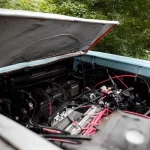The kitchen, often hailed as the vibrant heart of the home, beats to the essential rhythm of daily life – a dynamic space for cooking, cleaning, and heartfelt connection, yet beneath its gleaming countertops and culinary creations lies a silent, often overlooked hero: the humble kitchen sink. When this indispensable fixture falters, persistently blocked by accumulated debris or suffering from a faulty drain, the entire household can rapidly grind to a frustrating, inconvenient halt, threatening both comfort and hygiene. But what if we told you that mastering one of its most crucial components – the kitchen sink strainer – is not only incredibly straightforward, demystifying a seemingly complex task, but also profoundly empowering, granting you immediate control over your home’s essential plumbing? Forget the immediate panic of a slow drain or the dread of a costly plumber’s emergency visit; a new, more self-reliant era of home maintenance, robustly fueled by universally accessible knowledge and digital guidance, is undeniably here.
Indeed, the digital age has remarkably democratized what was once the exclusive domain of skilled tradespeople. Platforms like YouTube have transformed complex tasks into approachable, step-by-step visual guides, effortlessly turning everyday homeowners into confident DIYers. This burgeoning movement actively empowers individuals to tackle minor repairs with newfound assurance, fostering a deep sense of personal accomplishment and saving significant financial expenses. Properly installing a kitchen sink strainer is a prime example of such an achievable task, offering immediate gratification and substantial long-term benefits for your home’s entire plumbing system. By actively embracing these readily available online resources, you’re not merely fixing a drain; you are intelligently investing in self-sufficiency and proactively preventing future plumbing headaches.
| Category | Details |
|---|---|
| Purpose of a Kitchen Sink Strainer | A critical component meticulously designed to catch food particles, debris, and other solids, rigorously preventing them from entering and clogging your delicate plumbing system. It vigilantly protects your pipes and septic/sewer lines from costly blockages. |
| Essential Tools for Installation |
|
| Common Types of Sink Strainers |
|
| Benefits of DIY Installation | Realizing significant cost savings on professional labor, achieving immediate resolution of pressing plumbing issues, gaining an enhanced, practical understanding of home systems, and experiencing the profound satisfaction derived from a successfully self-completed project. |
| Key Installation Tips for Success | Always meticulously apply plumber’s putty or silicone for an absolutely watertight seal. Ensure all connections are initially hand-tightened before carefully using tools for final securing. Diligently check for any leaks immediately after installation by thoroughly running water. Consistently follow the manufacturer’s instructions precisely for optimal results. |
| Official Reference / Further Reading | The Home Depot — How to Install a Sink Strainer |
The inherent simplicity of a well-executed kitchen sink strainer installation remarkably belies its profound, far-reaching impact on your home’s intricate ecosystem. According to seasoned plumbing professionals, a correctly fitted and regularly maintained strainer stands as the absolute first line of defense against an array of costly and inconvenient plumbing emergencies. “Many of the service calls we routinely receive could have been entirely avoided with diligent, proper drain maintenance, starting unequivocally with a robust, functional strainer,” remarks Mark Jensen, a master plumber boasting over three decades of invaluable experience, whose expert insights consistently underscore the undeniable preventative power of this small yet mighty component. Ignoring this seemingly minor detail can inexorably lead to persistent blockages, pervasive foul odors, and even catastrophic pipe damage, often transforming a minor oversight into a truly major headache for unsuspecting homeowners.
Embracing the empowering DIY ethos, particularly for practical tasks like installing a kitchen sink strainer, also aligns perfectly with a broader, increasingly vital movement towards sustainability and self-reliance. Instead of defaulting to consumerism and hastily replacing items, homeowners are now increasingly repairing and meticulously maintaining, thereby significantly reducing waste and extending the valuable lifespan of their cherished household fixtures. This forward-thinking approach, passionately championed by a growing, vibrant community of online educators and practical hardware store workshops, not only consistently saves money but also profoundly instills invaluable life skills. Imagining a world where every household is adequately equipped with fundamental repair knowledge paints an incredibly optimistic picture for future generations, fostering a resilient, capable, and profoundly self-sufficient society.
So, the next time you encounter a sluggish drain or earnestly contemplate an essential upgrade, consider the humble yet mighty kitchen sink strainer; Its installation, far from being an intimidating or complex chore, is an accessible gateway to greater home mastery, offering both immediate practical benefits and a deeper, more meaningful connection to your living space. By integrating insights from advanced digital tutorials and practical, hands-on experience, you’re not merely preventing a future clog; you’re actively shaping a more self-sufficient, resilient, and ultimately, a more satisfying home environment. Take the plunge – your kitchen, and your diligently managed wallet, will undoubtedly thank you for it.






